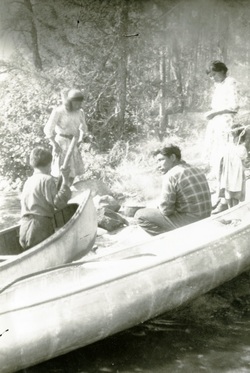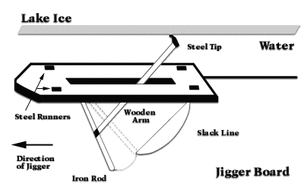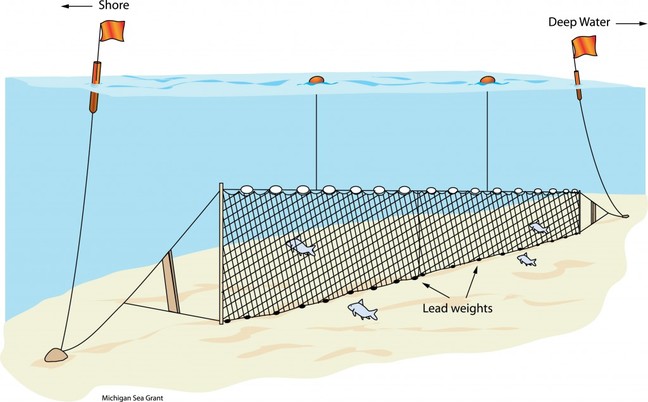First Nation Fishing
...We believe that all of the creatures, all creations, were given original instructions. And so we believe that the fish also have original instructions that they carry out, and a part of that, is to take care of the relations in the water and on the land..." Kaaren Dannenmann, NamekosipiiwAnishinaaoeKwe.
Gill nets can be set all year round. A gill net can be 50 feet to 300 feet in length and about 8 feet wide. The net is made of different size mesh, most commonly 4 inches, into which the fish swim and are caught by the gills. The net is put into the water, anywhere from 6 to 70 feet deep, and held in place with weights, usually rocks, and floats on a long piece of rope on each end of the net. Traditional floats were made of wood, but today they can be purchased or even use empty plastic jugs.
Several fish can be caught in a gill net, which may seem like a lot at one time, but the food is consumed quickly as the fish provide for many people. Sometimes fish are caught for a family meal, for feast and celebrations, for preserving, or for sharing with friends, family and the elders of the community. Fish are not a commodity, but a gift that should be shared.
Several fish can be caught in a gill net, which may seem like a lot at one time, but the food is consumed quickly as the fish provide for many people. Sometimes fish are caught for a family meal, for feast and celebrations, for preserving, or for sharing with friends, family and the elders of the community. Fish are not a commodity, but a gift that should be shared.
Fish are a traditional food, which are served during feasts, memorials and birthdays. Most of the fish is eaten: the head, gills, air sac (swim bladder), stomach, heart, liver, fish eggs, sperm sac, fins, and skin. Some parts of the fish are a delicacy or a treat. For example, fish eggs are a special treat and sometimes are carefully mixed into bannock, and then fried or baked.
Fish are gifts that provide for First Nations people in many different ways. While the most common use is to provide food, fish can be used can be used for other purposes, such as medicine and jewellery.



